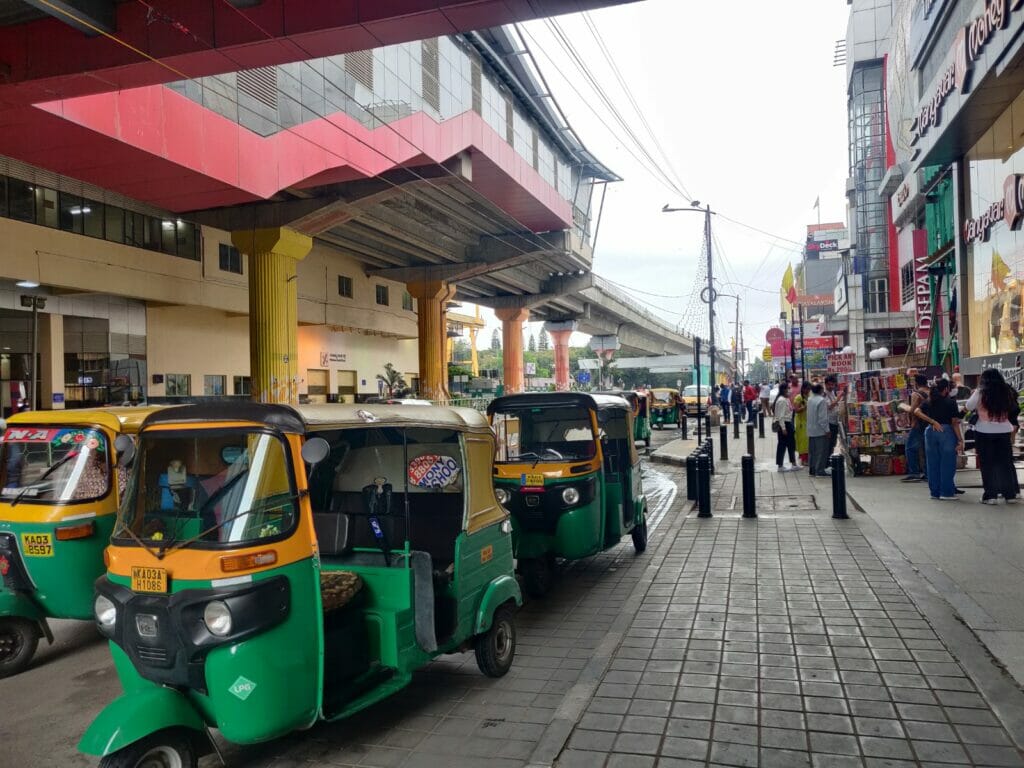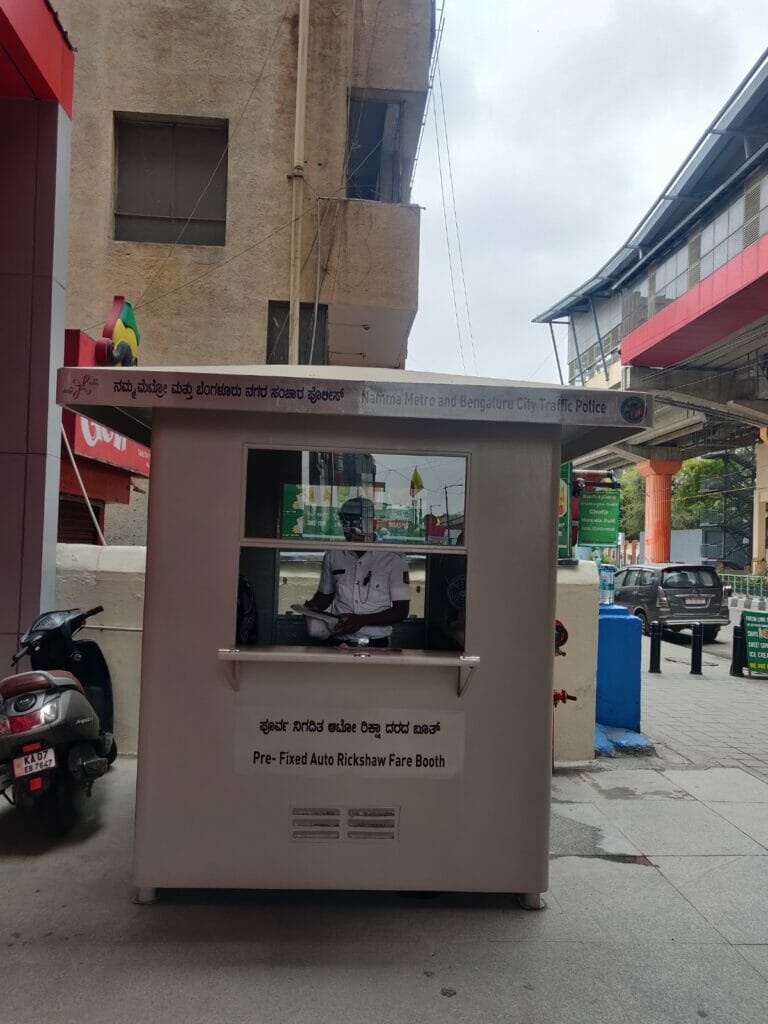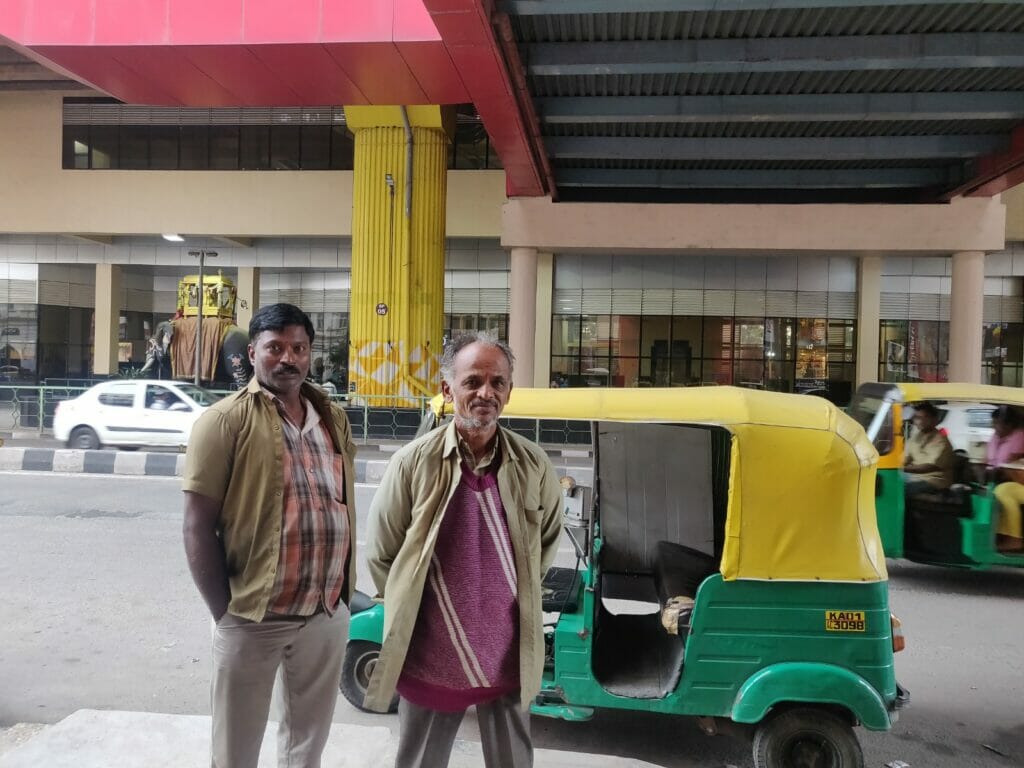While the Bengaluru Metro Rail Corporation Limited is committed to expanding its network across the city, lack of affordable access to its stations remains a stumbling block for authorities and commuters alike. As per reports, BMRCL is in the process of extending the green line to Challaghatta and Madavarsa (BIEC) and land acquisition is underway for the pink line (part of Phase 2), which is proposed to run from Kalena Agrahara (formerly Gottigere) to Nagawara.
The lack of last-mile connectivity in the city, coupled with erratic schedules and insufficient buses of BMTC, often compel commuters to resort to booking an auto for the entirety of their trip. To overcome the gaps in last-mile connectivity, the Corporation, along with the Bengaluru Traffic Police, has decided to bring in pre-paid auto stands at certain stations to make travel more convenient for commuters.
The kiosks are also making a comeback because the fares charged by autos are considered unaffordable for many passengers, especially after ride-hailing apps like Ola and Uber increased charges sharply.
What prompted the demand?
The need for these kiosks was realised in August 2021, when reports of the two parastatals agreeing to reinstate and facilitate pre-paid auto stands came about. The aim was to free up congestion and provide the much-needed connectivity from metro stations to various points conducive for commuters. However, the plan is now making a comeback with BMRCL’s Managing Director Anjum Parvez quoting how this might reduce the need for haggling with autorickshaw drivers and prevent harassment faced by customers.

As per reports, this demand was also brought on by customers who voiced their concerns about the spike in fares on ride-hailing applications like Uber and Ola that would charge a minimum of Rs 100 for a mere distance of 1-2 km. This also resulted in the Transport Department imposing a temporary ban on the operations of these applications.
Citizen Matters in October reported on how the ban translated on the ground, and its legal implications. This also led to the emergence of other alternatives to Uber and Ola, which had monopolised the market, compounding a commuter’s choice to book rides through these alternatives.
Read more: Clamp down on Bengaluru’s Ola, Uber autos: Who stands to gain?
“We are trying to do it (set up kiosks) across five stations (Majestic, Banashankari, Byappanahalli and two at Nagasandra), based on how feasible it is to do so without affecting the traffic flow,” says Yashwant Chavan, the Public Relations Officer at BMRCL. When asked if it would be a more affordable option to increase the availability and connectivity of the BMTC, Yashwant replied that the buses are already covering 33 metro stations, and essayed over 4,500 trips.
He says this existed prior to the pandemic, and with commuters having complained of the unavailability or unaffordability of autos, they are re-instituting them. Veerabhadrappa, an auto driver who has seen the kiosks operate near the Mahatma Gandhi road metro station, says they exist.
Operations and operatives
The MG road metro station touts a newly-installed kiosk that is currently being manned by an official from the BTP, who is in charge of learning the destinations of the commuters and assigning them autos. The BTP is also tasked with restoring the currently inoperative auto stands across various points in the city, and is slated to ensure that the autos on stand-by will adhere to lane discipline and queue lines.

The rates are fixed and regulated as per the metre fare, and the fares are determined by the Regional Transport Office (RTO). The official had a binder with pre-determined rates for all places across the city that commuters have frequently traveled to. “Even if they turn on the metre, it will display the same fare that we are charging,” said the official on the condition of anonymity. He adds that the fares have been fixed fairly for the auto drivers as well.
Read more: An urban rail network: Light at the end for Bengaluru’s harried commuters!
They note down the destination, auto number, fare and timings. “If a customer faces a problem with the auto driver regarding their behaviour, they can lodge a complaint with us; because we have the driver’s details with us, we can take appropriate action,” he states.

“This will help commuters save time looking for autos and travel hassle-free,” says Veerabhadrappa, who has been driving autos in Bengaluru since 1994. He recollects that the pre-paid auto kiosks have existed ever since the metro has been functional. Adding the kiosk has ensured a free flow of customers throughout the day, however, there is an uptick of requests between 8 am to 11 am. “After dropping the passenger, we come back to the metro station unless someone flags us on the way, then we take up that ride.”
While the BTP official says that the BMRCL will oversee the management of the kiosks, he also mentions that the police will step in to ensure the safety and smooth flow of operations.